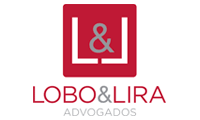Potential investors or acquirers of Brazilian mining companies are often concerned about the lack of transparency and of clear standards and practices for reporting mineral resources and reserves. According to White & Case LLP, a similar issue also affects the acquisition of US listed mining companies by foreign investors1. Since there is a difference between internationally recognized standards and the US Securities and Exchange Commission’s rules for reporting mineral resources and reserves, such companies may not have disclosed or even possess the information needed to meet the disclosure requirements of the foreign investor’s jurisdiction.2
To address this issue in the US, the SEC has recently proposed to change its rules regarding disclosure of mineral resources and reserves3. The objective is to align them with the standards published by the Committee for Mineral Reserves International Reporting Standards - CRIRSCO4, which are adopted by mining companies in countries that have the most developed capital markets for the mining sector, such as Australia, Canada and South Africa.
Brazil has also made developments in this area. As reported in our January 2016 Regulatory newsletter5, in December of last year Brazil was admitted as a member of CRIRSCO, after the Committee’s approval of the wording of the Brazilian CBRR Guide on the Reporting of Exploration Results and Mineral Resources and Reserves (Guia CBRR para Declaração de Resultados de Exploração, Recursos e Reservas Minerais) proposed by the Brazilian Commission of Resources and Reserves (Comissão Brasileira de Recursos e Reservas - CBRR).
Among other important provisions following CRIRSCO’s international reporting template, including the categorization of "mineral resources" as "inferred," "indicated" and "measured" in order of increasing geological confidence, the rules on conversion of measured or indicated mineral resources into "probable" or "proven" mineral reserves, and the permission that a pre-feasibility study (rather than a final feasibility study) serve as a basis for determining and disclosing mineral reserves, both the SEC proposed rules and the rules under the Brazilian CBRR Guide require that disclosure of mineral reserves, mineral resources and exploration results be based on information and supporting documentation by one or more "qualified persons". There are some minor differences in the definition of qualified person under these rules, but both establish that she must be a member of a recognized professional organization and have at least five years of relevant experience with the type of mineralization and deposit under consideration.
If approved, the SEC rules will be mandatory for all registrants with material mining operations (which includes all related operations from exploration through extraction to first point of material external sale)6. It will be similar to what occurs in Australia/New Zealand and Canada, where listed mining companies must respectively comply with the JORC Code and the NI 43-101 Standards of Disclosure for Mineral Projects. The Brazilian CBRR Guide, though, is not mandatory. It is only a best practice recommendation for mining companies issuing public statements concerning exploration results, mineral resources and reserves.
But despite being optional, these rules will probably be followed by Brazilian companies that intend to raise capital or become an M&A target. By having their reports on mineral resources and reserves prepared by qualified persons and following more detailed criteria for disclosing information on inferred, indicated and measured resources, as well as on probable and proven reserves, these mining companies will provide potential investors or acquirers with a more reliable source of information for assessing their value, enhancing the likelihood of a successful capital raising or M&A deal. The standardized criteria set forth in the Guide will likely also be welcome by the debt market, including BNDES, Brazil’s main public financing agent for development.
Furthermore, although there has been some efforts by the São Paulo Stock Exchange, the CBRR and several Brazilian mining industry advocacy groups such ABDI, ABPM, ADIMB and IBRAM to foster investments in the Brazilian mining industry, the US SEC’s initiative should be a further incentive for its Brazilian counterpart – the Comissão de Valores Mobiliários – to play a role in the development of this important sector of our economy.
___________
1 For more details: https://www.whitecase.com/publications/alert/key-milestone-towards-standardisationmineral-reserve-and-resource-reporting.
2 Id.
3 The SEC published the proposed rules for comment on June 27, 2016. The comment period will end on August 26, 2016.
4 International entity dedicated to the development of rules and standards for the reporting of information related to mineral resources and reserves. It is comprised of representatives of Australásia (JORC), Canada (CIM), Chile (Comité de Recursos Mineros), Europe (PERC), Mongolia (MPIGM), Russia (NAEN), South Africa (SAMREC) and the United States (SME).
5 Available at https://www.loboeibeas.com.br/wp-content/uploads/2016/03/InformativoRegulatorio.pdf
6 A registrant’s mining operations are presumed to be material if its mining assets constitute 0% or more of its total assets (https://www.sec.gov/rules/proposed/2016/33-10098.pdf, p. 17.)
___________
*Daniela Bessone and Gabriel Rios Corrêa are partners at the Brazilian law firm Lobo & Ibeas Advogados.
